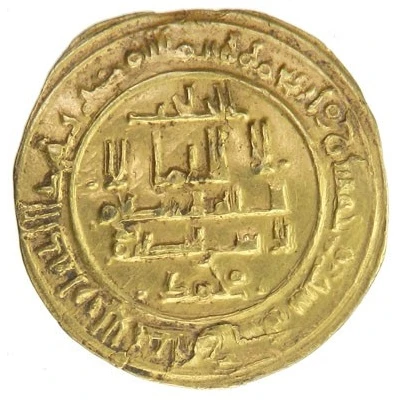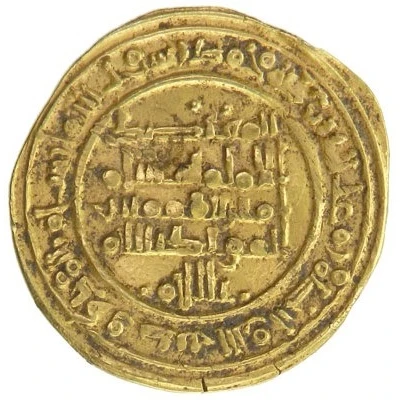


© Stephen Album Rare Coins
Dirham - al-Mu'tadid 'Abbad ibn Muhammad Abbadid dynasty - 1023-1095 AD ND
| Silver | 2.34 g | 23 mm |
| Issuer | Taifa of Seville (Al-Andalus and Ceuta) |
|---|---|
| Emir | Al-Mutadid Abbad ibn Muhammad (أبو عمرو عبّاد بن محمّد بن عبّاد المعتضد بألله) (1042-1069) |
| Type | Standard circulation coin |
| Years | 1042-1069 |
| Value | 1 Dirham (0.7) |
| Currency | Dinar (1023-1091) |
| Composition | Silver |
| Weight | 2.34 g |
| Diameter | 23 mm |
| Shape | Round (irregular) |
| Technique | Hammered |
| Demonetized | Yes |
| Updated | 2024-10-05 |
| Numista | N#83967 |
|---|---|
| Rarity index | 97% |
Reverse
Script: Arabic
Comment
Abbad ibn Muhammad, AL-MUTADID was the last ruler of the Taifa of Seville (1069–1091) and a member of the Abbasid dynasty. The coin weight varies between 2.34 and 2.50 ghttps://en.wikipedia.org/wiki/Al-Mu%27tamid_ibn_Abbad
The Taifa of Seville started as a small, weakly defended territory comprising parts of current Spanish provinces of Seville, Huelva and Cadiz, but quickly emerged as the most powerful taifa kingdom of the time, after its rulers began pursuing a policy of expansion. After several military campaigns, the kingdom achieved dominance over all of Western Andalusia and Murcia, gradually absorbing the taifas of Badajoz, Algeciras, Granada and Málaga, Mértola (1044), Huelva (1051), Algarve (1051), Niebla (1053) Algeciras (1055), Silves (1063), Ronda (1065), Morón (1066), Carmona (1067), Arcos (1069) and even Córdoba itself (1070, lost in 1075 to Toledo but regained in 1077). The kingdom reached its largest territorial extent in 1078 with the capture of Murcia in 1078.
Interesting fact
One interesting fact about this coin is that it was issued during the reign of al-Mu'tadid 'Abbad ibn Muhammad, who was the founder of the Abbadid dynasty and ruled over the Taifa of Seville in Al-Andalus (present-day Spain) from 1042 to 1069. The coin is made of silver and weighs 2.34 grams, which was a significant weight for a coin during that time period. The fact that it was issued during a specific dynasty and reign makes it a valuable piece for collectors and historians interested in the history of Islamic coinage.



